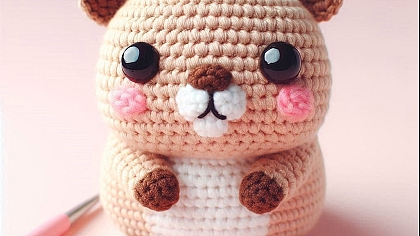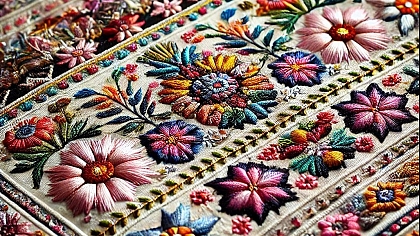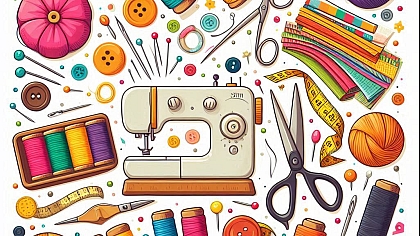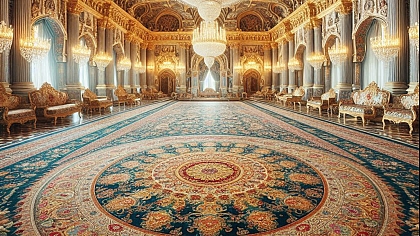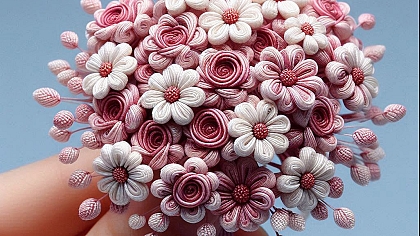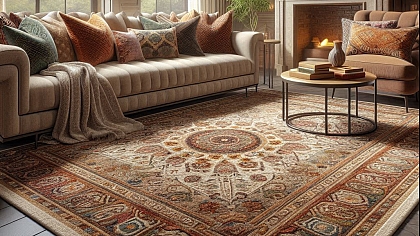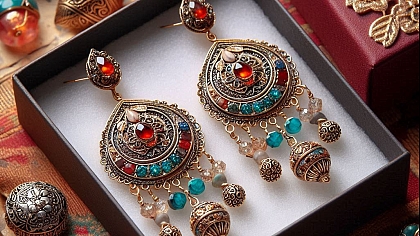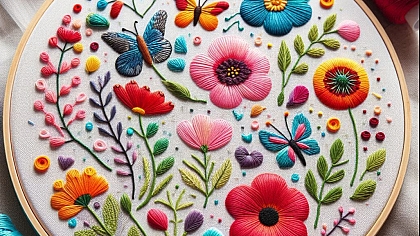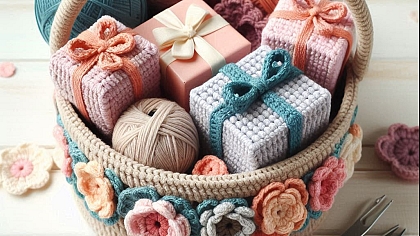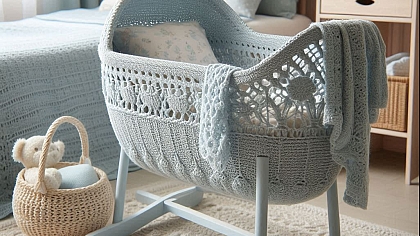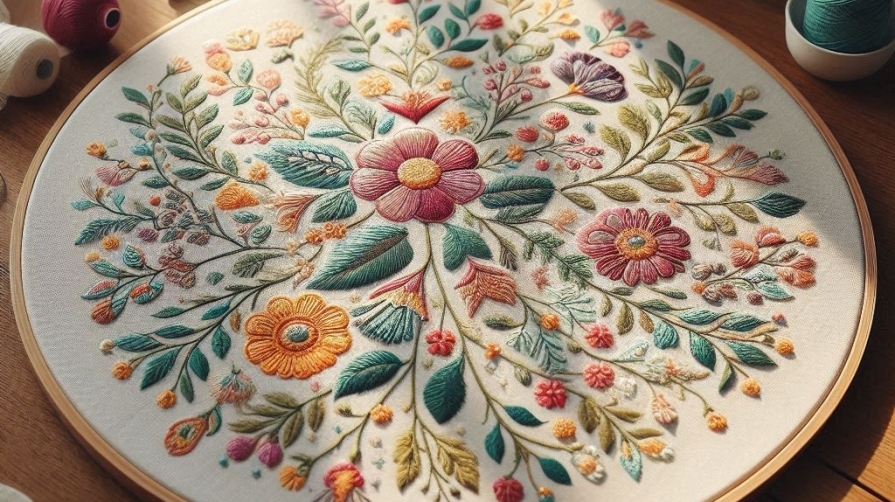
Mastering the Art of Embroidery: Advanced Stitching Techniques
Embroidery, an art form that has adorned garments, tapestries, and household items for centuries, continues to captivate artists and hobbyists alike. While beginners find joy in the simplicity of basic stitches, the true mastery of embroidery lies in the exploration of advanced techniques. These sophisticated methods not only elevate the aesthetic appeal of the work but also provide a deeper connection to the rich heritage and intricate craftsmanship that define this timeless art. This article delves into the world of advanced stitching techniques, unraveling the secrets to mastering embroidery and transforming simple fabric into a masterpiece of texture and design.
Exploring the Intricacies of Goldwork
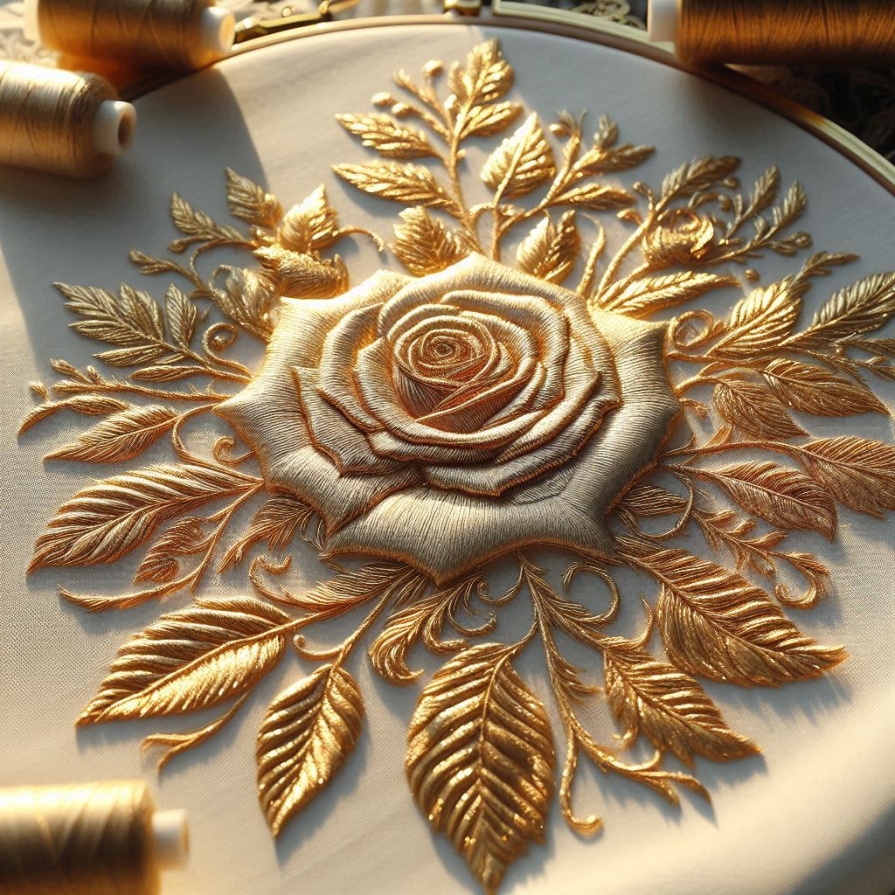
Goldwork, an opulent and intricate form of embroidery, has a long-standing history rooted in regal and ceremonial garments. This technique involves using metal threads, often gold or silver, to create a dazzling effect on fabric. The threads are typically couched down with silk or cotton threads, allowing for the creation of elaborate patterns and textures.
To begin with goldwork, it is essential to understand the different types of metal threads available. Japanese gold thread, passing thread, and smooth purl are just a few examples, each offering a unique texture and sheen. The process begins by transferring the design onto the fabric, often using a light box and a heat-transfer pen for precision. A solid foundation of felt padding is then applied to areas that require a raised effect, adding dimension to the final piece.
One of the most mesmerizing aspects of goldwork is the use of couching. This technique involves laying the metal thread on the surface of the fabric and securing it with small stitches. Careful attention to tension and spacing ensures a smooth and even finish. For added intricacy, chip work, where tiny pieces of purl are cut and sewn onto the fabric, can create a stunning mosaic-like effect. Mastering these techniques requires patience and a steady hand, but the result is a piece that exudes luxury and sophistication.
The Elegance of Stumpwork
Stumpwork, also known as raised embroidery, is a three-dimensional technique that brings designs to life with remarkable depth and texture. Originating in the 17th century, this method uses a variety of materials and stitches to create intricate, sculptural effects. Unlike traditional flat embroidery, stumpwork involves the use of wire, padding, and even small objects to build up elements of the design.
To achieve the desired three-dimensional effect, it is crucial to start with a well-constructed foundation. Elements such as leaves, petals, and fruits are often created separately using wire and fabric. The wire, shaped into the desired form, is covered with embroidery floss or silk thread, creating a realistic and flexible structure. These pieces are then carefully attached to the main fabric, often with padding underneath to enhance the raised effect.
One of the hallmarks of stumpwork is the use of needlelace, a technique that creates intricate, lace-like details. Needlelace is worked separately and then applied to the piece, adding an element of delicacy and intricacy. Additionally, techniques such as long and short stitch, satin stitch, and French knots are employed to add texture and depth. The result is a visually captivating piece that invites the viewer to explore every detail.
Refining the Technique of Silk Shading
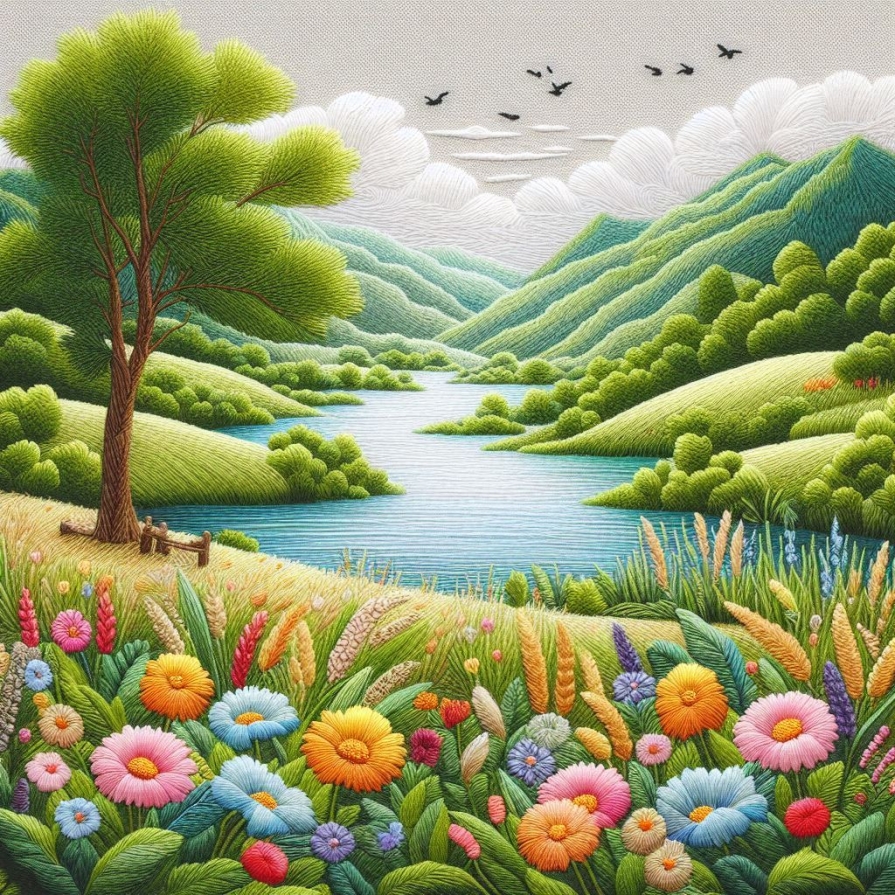
Silk shading, also known as thread painting, is an advanced embroidery technique that requires a keen eye for color and shading. This method is often used to create realistic images, such as portraits, landscapes, and floral designs. The beauty of silk shading lies in its ability to blend colors seamlessly, mimicking the subtle gradations found in nature.
The key to successful silk shading is the selection of threads. Silk threads are preferred for their lustrous sheen and smooth texture, which allow for a polished finish. The process begins by transferring the design onto the fabric, paying close attention to the direction of the stitches. The direction of the stitches, known as stitch direction, plays a crucial role in achieving a natural and lifelike effect.
Blending colors in silk shading is akin to painting with a brush. Using long and short stitches, the artist carefully layers the threads, gradually transitioning from one color to another. The stitches should be close together to avoid gaps and create a smooth gradient. This technique requires patience and practice, as achieving a seamless blend of colors can be challenging. However, the effort is well worth it, resulting in a piece that showcases the artist's skill and attention to detail.
Mastering the Complexity of Blackwork
Blackwork, characterized by its intricate geometric patterns and monochromatic palette, is a timeless technique that offers both elegance and versatility. Traditionally worked in black thread on white or off-white fabric, this technique has evolved to include a variety of colors and patterns, allowing for endless creative possibilities.
The foundation of blackwork lies in its use of counted thread techniques, where the design is created by stitching over a specific number of fabric threads. This method requires precision and an understanding of the fabric's weave, making evenweave or linen fabrics ideal choices. The design is typically transferred onto the fabric using a water-soluble pen, ensuring accuracy and ease of removal.
One of the defining features of blackwork is the use of double-running stitch, also known as Holbein stitch. This reversible stitch allows for the creation of intricate patterns with clean lines on both the front and back of the fabric. The technique involves stitching along a path in one direction and then returning along the same path, filling in any gaps. This method not only ensures a neat finish but also adds strength and durability to the piece.
Advanced blackwork often incorporates shading techniques to add depth and dimension. By varying the density and spacing of the stitches, the artist can create a range of tonal values, from light to dark. This technique, known as tonal or shaded blackwork, requires a keen eye for detail and an understanding of light and shadow. The result is a piece that combines the precision of geometric patterns with the subtlety of shading, creating a visually captivating effect.
Exploring the Beauty of Crewelwork
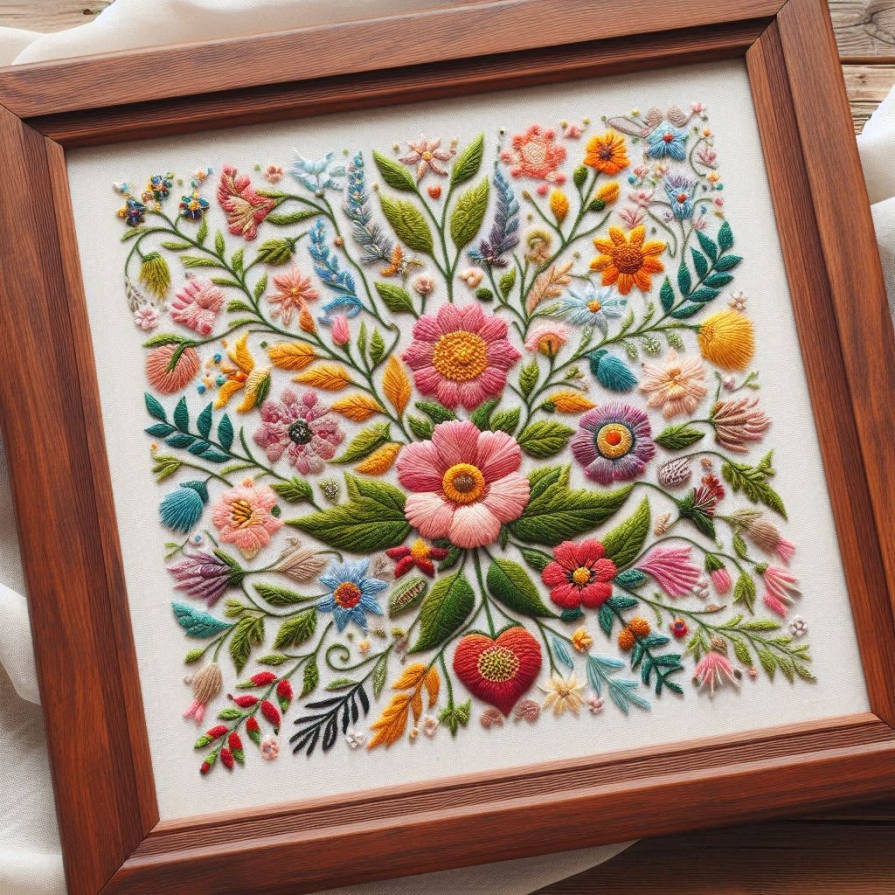
Crewelwork, a form of surface embroidery that uses wool thread, is known for its bold and colorful designs. This technique, which dates back to medieval times, allows for a great deal of creativity and expression, making it a favorite among advanced embroiderers. The use of wool thread adds a unique texture and richness to the work, setting it apart from other forms of embroidery.
The first step in crewelwork is selecting the appropriate materials. Wool threads, available in a wide range of colors and textures, provide the foundation for this technique. The fabric, often linen or cotton twill, should be sturdy enough to support the weight of the wool thread. The design is transferred onto the fabric using a lightbox and heat-transfer pen, ensuring accuracy and ease of stitching.
One of the key features of crewelwork is its use of a variety of stitches to create texture and dimension. Long and short stitch, satin stitch, and chain stitch are commonly used to fill in large areas, while stem stitch and outline stitch are used for outlining and detailing. The use of raised stitches, such as bullion knots and French knots, adds further depth and texture to the piece.
Advanced crewelwork often involves the use of shading techniques to create a realistic effect. By blending different shades of wool thread, the artist can achieve a smooth transition from light to dark, adding depth and dimension to the design. This technique requires a keen eye for color and a steady hand, as the threads must be blended seamlessly to achieve the desired effect. The result is a piece that combines the boldness of wool thread with the subtlety of shading, creating a visually stunning effect.
The Art of Needle Painting
Needle painting, also known as thread painting, is a technique that allows the artist to create realistic images with the use of colored threads. This technique, which requires a high level of skill and precision, is often used to create portraits, landscapes, and floral designs. The key to successful needle painting is the ability to blend colors seamlessly, creating a smooth gradient that mimics the subtle gradations found in nature.
The first step in needle painting is selecting the appropriate materials. Silk threads are preferred for their lustrous sheen and smooth texture, which allow for a polished finish. The fabric, often linen or cotton, should be sturdy enough to support the weight of the threads. The design is transferred onto the fabric using a lightbox and heat-transfer pen, ensuring accuracy and ease of stitching.
The process of needle painting begins with the selection of colors. The artist carefully chooses threads that match the colors of the subject, paying close attention to the direction of the stitches. The direction of the stitches, known as stitch direction, plays a crucial role in achieving a natural and lifelike effect. By varying the length and direction of the stitches, the artist can create a sense of depth and dimension, adding realism to the piece.
Blending colors in needle painting is akin to painting with a brush. Using long and short stitches, the artist carefully layers the threads, gradually transitioning from one color to another. The stitches should be close together to avoid gaps and create a smooth gradient. This technique requires patience and practice, as achieving a seamless blend of colors can be challenging. However, the effort is well worth it, resulting in a piece that showcases the artist's skill and attention to detail.
Unveiling the Charm of Appliqué Embroidery
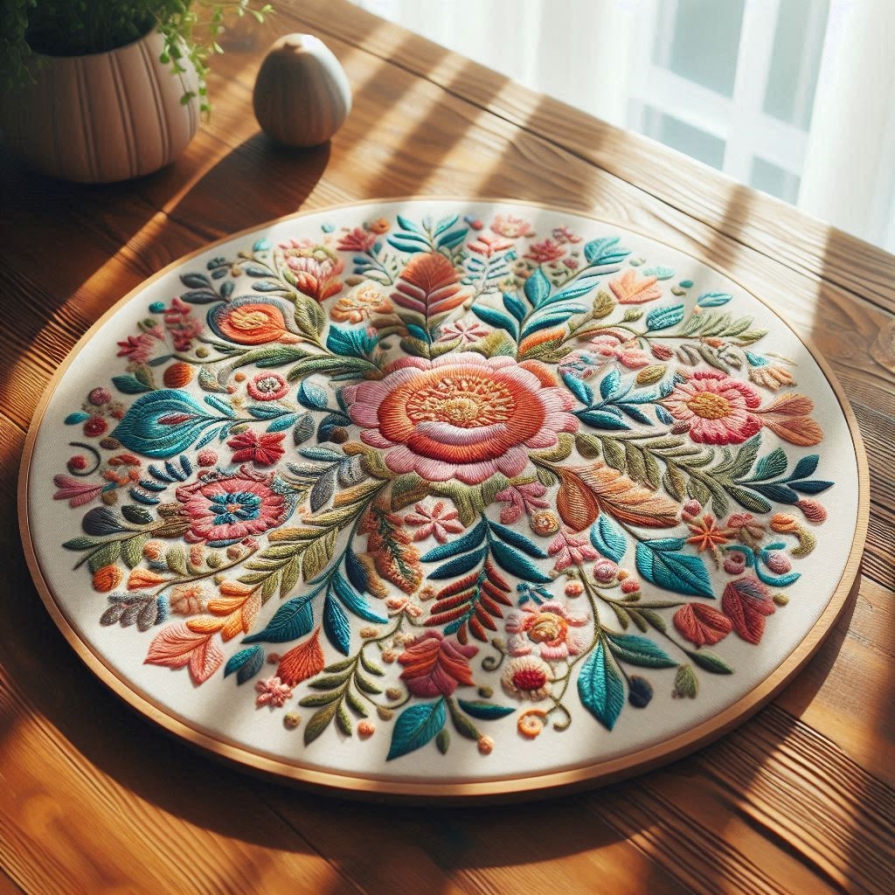
Appliqué embroidery, a technique that involves sewing pieces of fabric onto a larger piece to create a design, is a versatile and creative method that adds texture and dimension to embroidery. This technique, which has been used for centuries in various cultures, allows for a great deal of artistic expression and creativity.
The first step in appliqué embroidery is selecting the appropriate materials. Fabrics of different textures and colors can be used to create the design, adding visual interest and depth. The base fabric should be sturdy enough to support the weight of the appliqué pieces. The design is transferred onto the fabric using a lightbox and heat
-transfer pen, ensuring accuracy and ease of stitching.
The process of appliqué embroidery begins with the preparation of the fabric pieces. The pieces are cut out according to the design and then attached to the base fabric using temporary adhesive or basting stitches. The edges of the fabric pieces are then secured with embroidery stitches, such as blanket stitch or satin stitch, creating a neat and polished finish.
One of the key features of appliqué embroidery is the use of layering to create depth and dimension. By layering different pieces of fabric, the artist can create a sense of depth and perspective, adding realism to the design. This technique requires a keen eye for detail and an understanding of color and texture, as the fabrics must be chosen and arranged carefully to achieve the desired effect.
Perfecting the Art of Cutwork
Cutwork, a technique that involves cutting away portions of the fabric to create a design, is a delicate and intricate form of embroidery that requires precision and skill. This technique, which is often used to create lace-like effects, adds an element of elegance and sophistication to embroidery.
The first step in cutwork is selecting the appropriate materials. Linen or cotton fabric is often used for its strength and durability, as the fabric must be able to support the cut areas without fraying. The design is transferred onto the fabric using a lightbox and heat-transfer pen, ensuring accuracy and ease of stitching.
The process of cutwork begins with the outlining of the design using embroidery stitches, such as satin stitch or buttonhole stitch. These stitches not only define the design but also reinforce the edges of the cut areas, preventing fraying. Once the design is outlined, the fabric within the design is carefully cut away using sharp scissors or a craft knife.
One of the key features of cutwork is the use of filling stitches to add texture and dimension to the cut areas. Stitches such as eyelets, picots, and bars are used to fill in the open spaces, creating a lace-like effect. This technique requires a steady hand and a keen eye for detail, as the stitches must be evenly spaced and neatly executed to achieve a polished finish.
Advanced cutwork often incorporates the use of color and shading to add depth and dimension to the design. By varying the density and spacing of the stitches, the artist can create a range of tonal values, adding realism and visual interest to the piece. This technique requires patience and practice, but the result is a piece that showcases the artist's skill and creativity.
The Endless Possibilities of Advanced Embroidery
Mastering the art of embroidery involves more than just learning new stitches; it requires a deep understanding of the techniques and materials, as well as a commitment to practice and refinement. The advanced techniques discussed in this article, from goldwork to cutwork, offer endless possibilities for creativity and expression. Each technique, with its unique challenges and rewards, provides an opportunity to explore the rich heritage and intricate craftsmanship that define this timeless art.
As you embark on your journey to master advanced embroidery techniques, remember that patience and perseverance are key. Each stitch, each thread, and each design is a step towards greater skill and artistry. Embrace the challenges, learn from your mistakes, and celebrate your progress. With dedication and practice, you will not only master the art of embroidery but also create beautiful, intricate pieces that reflect your unique vision and talent.

